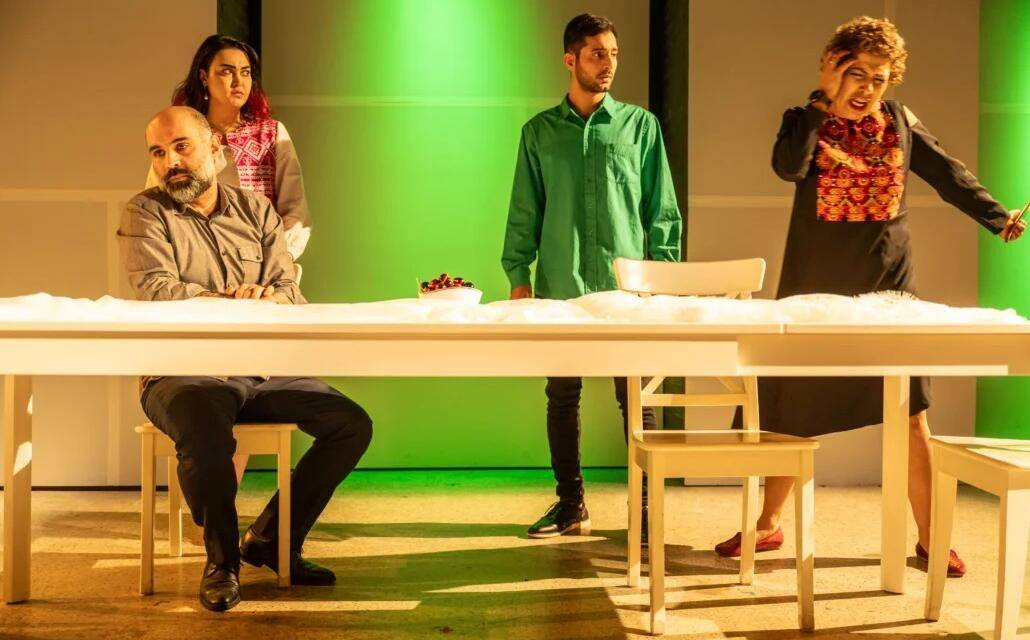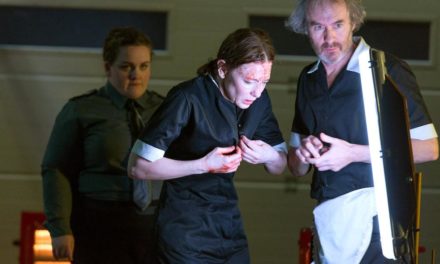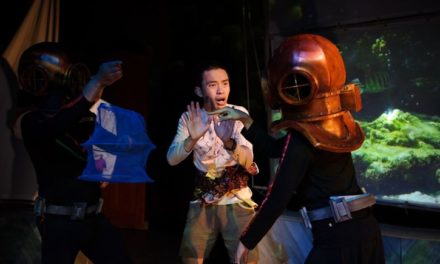Toronto’s theatre scene thrives on its multicultural identity, a modern-day Tower of Babel where diverse voices engage in continuous dialogue. Iranian-Canadian playwright Mohammad Yaghoobi occupies a prominent space in this vibrant landscape. His latest work, Earworm, staged at Crows Theatre, is a testament to his ongoing contribution to understanding life under a totalitarian regime. While the play offers thought-provoking social commentary, its effectiveness is hampered by certain stylistic choices.
Yaghoobi’s theatrical journey is a significant contribution to comprehending the complexities of life under an authoritarian regime. Plays like A Moment of Silence, The Only Possible Way, Geraniums, Winter of 88, Drought and Lie, Moon in Water, Red and Others, and Writing in the Dark exemplify his signature style: a blend of melodrama and powerful social critique. These works often feature non-linear narratives that invite audiences to actively participate in piecing together the story and its deeper meaning. Yaghoobi’s drama also aims to show how the Iranian family life has turned into a traumatic field afflicted with or influenced by contemporary political and social developments. From the bombings of Tehran in 1987 during the Iran-Iraq war (1980-1988) to the chain murders of intellectuals in the 1990s by the regime, the widespread election fraud and suppression of protests in 2009, and now in his latest performance, being Iranian in the diaspora after the bloody protests and emerging the “Woman, Life, Freedom” movement in 2022 in Iran, Yaghoobi’s theatre sheds light on the struggles and challenges faced by Iranians under a totalitarian regime. Earworm follows this tradition but with a level of explicitness that raises questions about sacrificing depth for immediacy.
Earworm: A Tale of Trauma and Confrontation:
The play centers on Homa (Aida Keykhaii), a passionate podcaster grappling with the unhealed wounds of her past in Iran. Now residing in Toronto, her life dramatically turns when she encounters her former interrogator, Timur. This chilling confrontation ignites a series of internal conflicts as Homa grapples with the trauma of her past and the complexities of navigating life as an immigrant. The play’s central conflict evokes themes explored in Ariel Dorfman’s “Death and the Maiden,” but Earworm prioritizes delivering a potent social message about the lingering effects of political persecution. In Dorfman’s play, we meet Paulina, a woman who was imprisoned, raped and tortured by her interrogator in a dictatorial regime. After the government’s fall, she accidentally encounters her former captor, Dr. Miranda and the thought of revenge is ignited in her. In Yaghoobi’s performance, the context of the meeting between Homa and her interrogator, Timur, is the acquaintance of their son and daughter in Canada and their decision to marry each other. The confrontation between these two families is where Yaghoobi wants to emphasize the role of trauma, unhealable wounds, lying, hypocrisy, and the importance of rationality in dealing with a criminal individual.
Exploring the Play’s Techniques and Shortcomings:
Yaghoobi employs meta-theatrical techniques, with Homa directly addressing the audience in a Brechtian style. This approach aims to raise awareness about Iranians’ ongoing struggles and the challenges immigrants face. However, the constant barrage of political statements delivered through Homa’s monologues can sometimes feel heavy-handed, overshadowing the development of the characters and the play’s emotional core.
Moreover, the characters are more a product of the author’s tyranny in expressing political innuendos than a product of the dramatic situation they are in. Topics such as how Iranians wear the hijab or the contradictions of keeping a dog in an Iranian immigrant family, merely serve as tools for the author to express their views, rather than creating an organic connection with the audience and the story.
For instance, the relationships between Timur and his daughter or Homa and her son seem unrealistic. When Timur’s daughter finds out about her father being an interrogator, she undergoes a sudden transformation from a loving daughter to someone who rejects her father. This transformation happens too fast and accidental without sufficient …. Similarly, the challenges of “Homa”‘s mother/son relationship are intangible and based solely on the mother’s social persona as a podcaster, which weakens the soul of dialogue and agency in the characters.
The minimalist set design, confined to a single table, chairs, and a lone screen, fails to create a visually stimulating environment. The heavy reliance on video projections further clutters the stage, creating a distracting visual cacophony. This hinders the actors’ movement and dilutes the emotional impact of key scenes. Additionally, the supporting characters lack depth, often reduced to mere bystanders in Homa’s story. Their underdeveloped relationships and motivations weaken the overall dramatic tension.

Earworm. Written and Directed by Mohammad Yaghoobi, Crows Theatre, Toronto, Canada, February/March 2024.
Beyond the Headlines: A Missed Opportunity?
Despite its limitations, Earworm sparks essential conversations about the immigrant experience and the lasting effects of political persecution. Yaghoobi’s commitment to raising awareness of these crucial issues is admirable.
However, the play’s focus on Iranian headlines could limit its broader appeal. While access to information is accessible in Canada, Yaghoobi’s script seems to overlook this. The play prioritizes informing non-Iranian audiences about Iran’s political situation over developing compelling characters and a strong plot.
Yaghoobi raises essential, rarely discussed issues like limitations to free speech and the presence of foreign agents in Canada, but his approach in this production was heavy-handed. A more nuanced dramaturgy could have presented these themes more effectively. Future productions could resonate with a broader audience by exploring the characters’ internal conflicts and universal themes like trauma, resilience, and the pursuit of justice.
Additionally, expanding the play’s thematic scope to encompass the experiences of other immigrant communities in Canada would create a richer and more impactful examination of contemporary issues. This would deepen the critical analysis and spark discussions about host-society policies, benefiting both Persian-speaking and non-Persian-speaking audiences.
For example, social security and justice are challenges faced by many immigrant communities in Canada, including Indigenous populations, Indian, Chinese, Russian, and African immigrants. Even after immigrating, they may not entirely escape the persecution they fled. A more integrated exploration of these issues could have a more substantial impact on both Iranian and non-Iranian communities, both in Canada and abroad.
Yaghoobi misses the opportunity for a more nuanced and impactful theatrical experience by focusing solely on Iranian headlines. The play’s dramaturgy, including lighting, set design, and tension-building, could benefit from a refresh to create a more captivating and cohesive theatrical world.
Earworm has the potential to be a powerful piece of theatre that tackles critical social issues. However, its current execution limits its impact. Future productions could resonate with a wider audience by focusing on developing compelling characters, exploring universal themes, and expanding its thematic scope.
Yaghoobi’s Earworm boldly attempts to confront the complexities of life under a totalitarian regime and the lingering effects of past trauma. While the play offers a potent social message, its effectiveness is hampered by its reliance on heavy-handed delivery and a minimalist set design. By broadening its thematic scope, exploring characters with greater depth, and utilizing a more nuanced dramaturgical approach, future productions could achieve a more significant artistic and social impact, resonating with both Persian-speaking and non-Persian-speaking audiences in Canada’s diverse cultural landscape.
This post was written by the author in their personal capacity.The opinions expressed in this article are the author’s own and do not reflect the view of The Theatre Times, their staff or collaborators.
This post was written by Amin Azimi.
The views expressed here belong to the author and do not necessarily reflect our views and opinions.


















